When considering the 6-day Kilimanjaro climb via the Marangu Route, one finds a well-rounded adventure that balances challenge with comfort. Climbers can expect cozy hut accommodations and professional guidance, ensuring safety as they navigate diverse terrains, from lush rainforests to stark alpine zones. With a well-structured itinerary designed to promote acclimatization, you will not only push their limits but also form strong bonds with their fellow trekkers. Yet, it’s the little details of preparation and what to expect on this iconic ascent that can make all the difference in the experience.
Good To Know
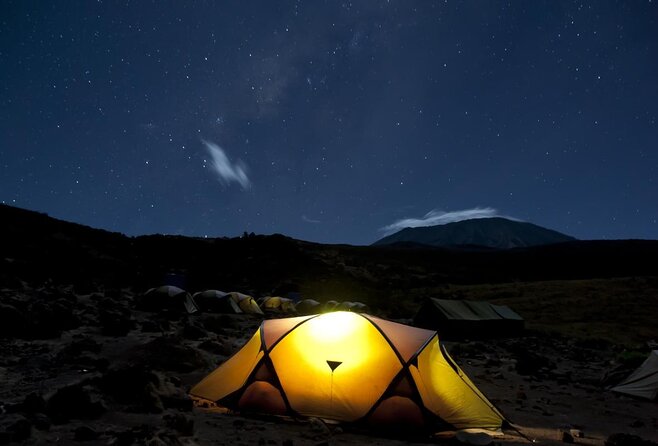
- The Marangu Route offers a straightforward 6-day ascent with comfortable hut accommodations for climbers.
- Trekkers experience diverse terrains, including lush rainforests and arctic desert, enhancing their adventure.
- Professional guides, certified as Wilderness First Responders, ensure climber safety and support throughout the journey.
- Acclimatization hikes are included to help climbers adjust to altitude, minimizing risks of altitude sickness.
- The package includes airport transfers, park entry fees, and hut accommodations, excluding airfare and personal equipment.
Overview of Kilimanjaro

Climbing Kilimanjaro offers adventurers a chance to experience one of the world’s most iconic peaks. Nestled in Tanzania, this majestic mountain attracts trekkers from all over.
The Marangu Route, often referred to as the "Coca-Cola" route, provides a relatively straightforward ascent, complete with comfortable hut accommodations.
Travelers can expect diverse terrain, ranging from lush rainforests to stark arctic desert, making each day unique.
With professional guides who are Wilderness First Responders, climbers benefit from expert support and safety monitoring. Porters carry equipment, allowing trekkers to focus on the journey.
With a 100% recommendation rate from past travelers, Kilimanjaro promises not just a climb but a memorable adventure that resonates long after reaching the summit.
You can also read our reviews of more tours and experiences in Moshi
Itinerary Breakdown

The itinerary for the Marangu Route provides a well-structured plan for adventurers eager to conquer Kilimanjaro.
Starting with an arrival day, trekkers enjoy a briefing before setting off from Marangu Gate to Mandara Hut.
Day two’s trek immerses them in lush rainforests, lasting about seven hours.
The journey continues to Horombo Hut on day three, with an acclimatization hike preparing climbers for higher altitudes.
Day four is dedicated to acclimatization, allowing bodies to adjust.
On day five, they trek to Kibo Hut, gearing up for the summit push.
The final ascent begins on day six, culminating at Uhuru Peak.
After soaking in the triumph, trekkers descend to Horombo Hut, wrapping up with a descent to Marangu Gate on day seven.
Accommodations and Amenities
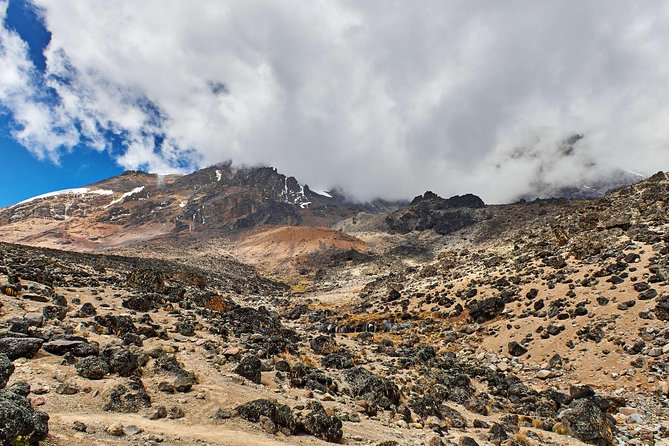
After a day of trekking through diverse landscapes, climbers can look forward to comfortable accommodations along the Marangu Route. Each night, they’ll rest in cozy wooden huts that provide a warm and welcoming environment. These huts are equipped with basic amenities, ensuring climbers can recharge for the adventures ahead.
| Hut Name | Altitude (m) |
|---|---|
| Mandara Hut | 2,700 |
| Horombo Hut | 3,720 |
| Kibo Hut | 4,700 |
| Uhuru Peak | 5,895 (summit) |
The huts also facilitate social interaction among climbers, creating a sense of camaraderie. With shared dining areas, climbers enjoy meals together, strengthening bonds as they prepare for the next leg of their journey.
Inclusions and Exclusions
When planning a Kilimanjaro adventure, understanding the inclusions and exclusions of the package is crucial for a smooth experience. The package typically covers essential aspects like airport pick-up and drop-off, ground transportation, and two nights at Aishi Machame Hotel with shared accommodations.
Plus, it includes entry fees to Kilimanjaro National Park, which is vital for climbing.
However, travelers should note what’s not included. Airfare and visa fees, approximately USD 50 for most nationals (USD 100 for U.S. passport holders), are out-of-pocket expenses.
Personal equipment isn’t part of the package either, but it’s available for hire. Being aware of these details helps climbers prepare better for their unforgettable journey up Kilimanjaro.
Group Support and Safety
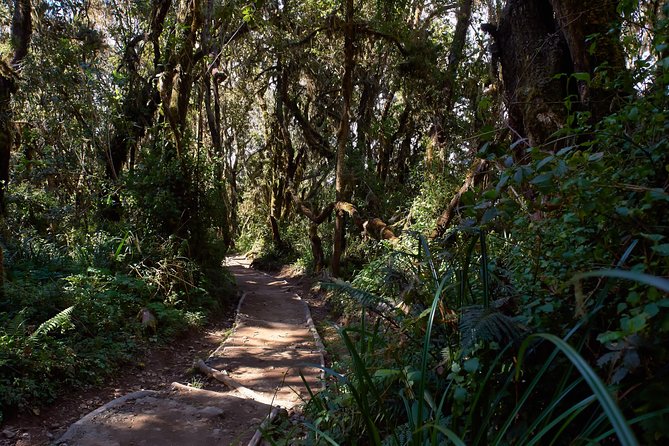
Planning a Kilimanjaro climb involves more than just logistics; having the right support and safety measures in place can make all the difference. A certified team of guides, trained as Wilderness First Responders, plays a crucial role in ensuring climbers’ safety. They monitor each participant’s stamina and mental wellbeing, providing encouragement when needed.
Meals are thoughtfully prepared, catering to dietary requirements and emphasizing hydration to maintain energy levels. The guides also prioritize acclimatization, helping climbers adjust to the altitude gradually.
With their experience and expertise, they create a supportive environment that fosters camaraderie among group members. This combination of professional guidance and shared experiences enhances the climb, making it not only safe but also memorable for everyone involved.
Climbing Preparation Tips
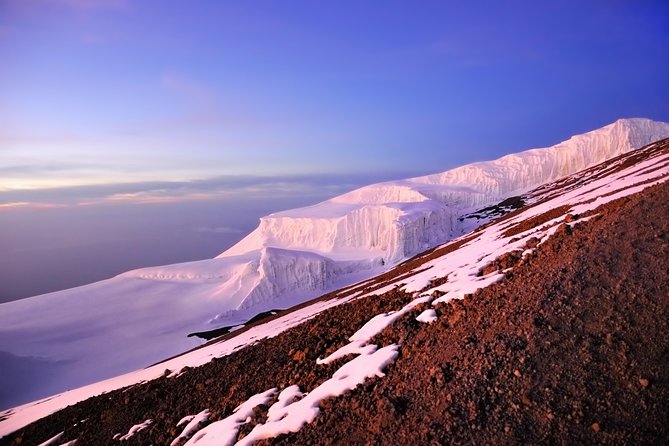
Before setting foot on Kilimanjaro, climbers should focus on several key preparation steps to ensure a successful ascent.
First, they need to build their endurance through regular cardio workouts, like hiking or running, at least a few months in advance.
It’s also crucial to invest in quality gear, including sturdy hiking boots and layered clothing to adapt to varying weather conditions.
Hydration is key, so practice drinking plenty of water daily.
Plus, climbers should familiarize themselves with altitude sickness symptoms and acclimatization techniques.
Lastly, mental preparation can’t be overlooked; staying positive and determined will help tackle the challenges ahead.
With the right preparation, climbers can boost their chances of reaching the summit and enjoying this unforgettable adventure.
Traveler Experiences
Many climbers rave about their experiences on the Marangu Route, often highlighting the camaraderie formed within their groups. They share stories of shared struggles and triumphs, creating lasting friendships.
Here are some memorable highlights from their journeys:
-
Sunrise at Uhuru Peak: Witnessing the breathtaking view as the sun rises over the horizon.
-
Challenging Terrain: Navigating lush rainforests and rocky paths that test their limits.
-
Camaraderie in Cabins: Sharing laughter and stories in cozy wooden huts after a long day.
-
Supportive Guides: Relying on knowledgeable guides who provide encouragement and expertise throughout the climb.
These experiences not only foster personal growth but also create unforgettable memories that climbers cherish long after their adventure ends.
Booking Your Adventure
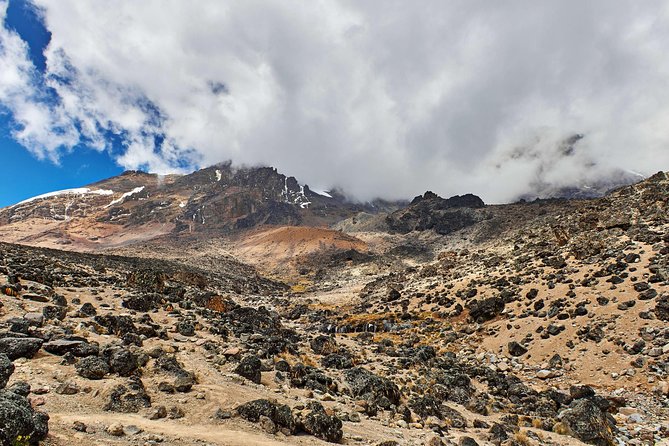
After experiencing the camaraderie and unforgettable moments on the Marangu Route, climbers often look forward to booking their adventure with ease.
They can start by researching reputable tour operators who specialize in Kilimanjaro climbs, ensuring they choose one with positive reviews and experienced guides.
It’s wise to compare packages, taking note of what’s included, like accommodations and meals, as well as any additional costs for gear rental.
Booking well in advance can secure preferred dates and potentially lower prices.
Most climbers recommend confirming the itinerary and asking questions to clarify any concerns.
Finally, preparing necessary documents, such as visas and flight arrangements, will help ensure a smooth journey.
With the right planning, their Kilimanjaro adventure awaits!
Frequently Asked Questions
What Is the Best Time of Year to Climb Kilimanjaro?
The best time to climb Kilimanjaro is during the dry seasons, from January to March and June to October. These months offer clearer skies and milder temperatures, making the trek more enjoyable and safer for climbers.
How Fit Do I Need to Be for the Climb?
For a successful climb, one’s fitness level should include regular cardio, strength training, and stamina-building exercises. It’s not about being an athlete; consistency in preparation makes a significant difference in enjoying the journey.
Can I Bring My Own Food or Snacks?
They can bring their own snacks, but it’s best to check with the guides first. The team provides meals, ensuring proper nutrition, and personal snacks can complement their energy needs during the climb.
Are There Any Age Restrictions for Climbers?
When it comes to age restrictions, most climbing companies don’t impose strict limits. However, they recommend participants be at least 10 years old, ensuring everyone’s physically capable and ready for the adventure ahead.
What Happens in Case of an Emergency During the Climb?
In emergencies, guides quickly assess the situation and initiate evacuation if necessary. They’ve trained for such scenarios, ensuring climbers’ safety. Communication with base camp keeps everyone informed and supported throughout the experience.
The Sum Up
Climbing Kilimanjaro via the Marangu Route is an unforgettable adventure that blends stunning scenery with comfortable accommodations. With expert guides by your side and a well-planned itinerary, trekkers can experience both the challenge and beauty of Tanzania’s iconic peak. By preparing adequately and embracing the journey, climbers not only reach Uhuru Peak but also create lasting memories and friendships. So, lace up those boots, gather your gear, and get ready for the adventure of a lifetime!
More 6-Day Experiences in Moshi
More Tour Reviews in Moshi
Not for you? Here's more nearby things to do in Moshi we have reviewed
- Day Trip To Tarangire National Park
- Mountain Kilimanjaro Climbing 6 Days Machame Route
- 6 Days Rongai Route Climbing Mt.Kilimanjaro
- 7-Day Kilimanjaro Climb Machame Route
- 7-Days Tour Mount Kilimanjaro Trekking via Machame Route
- Kilimanjaro: Lemosho Route and Camping Safari
- 8 Days 7 Nights Private Lodge Safari
- 5 Days Comfort Safari in Tanzania
- 2 Days Lodge Safari.
- One Day Tanzania Safari – Tarangire or Arusha National Park
- Day Trip Lake Manyara
- Mt.kilimanjaro-machame Route
